MiniatureBuildings.co.uk : Exploring model buildings of all sizes and styles
-
Top of
this page - Home
-
About
Us -
Recent
Articles -
Scales &
Uses - Modelling
-
All
Articles
Miniature Buildings
(top of page)
Home
Articles
- Miniature
Buildings - Home +
-
Recent
Blogs -
All
Articles
.
Miniature Buildings
Some thoughts on building models of all types and sizes
Some thoughts on building models of all types and sizes
Welcome. If you have not visited Minature Buildings before can I suggest you begin with my Aims and Scope article or at the Home Page. If you have visited before - welcome back. I hope this article is of interest to you.
Madurodam
Crop.jpg)
As discusssed in my article on model villages and 'miniature parks' one of my favourites is the Madurodam park located in Den Haag in the Netherlands.
It entrances adults as well as children and spans the whole spectrum of Dutch building. There are traditional Dutch farmhouses, the Rotterdam Docks, Schiphol airport and the tourist highlights of Amsterdam and elsewhere. All modelled at 1/25 scale. One of their slogans is 'Holland in an hour'. It was opened in 1952.
Like so many other tourist attractions it had a long Covid closure period. In summer 2021 The Hague Online reported "Madurodam may have been closed for a while, but a lot of hard work has gone into behind the scenes. After all, there was enough time to prepare the park for the public in peace. A new catering point has been opened on the expo square, completely in the old Dutch style. A number of miniature figures and buildings have been given a lick of paint..." This optimistic spin (a Madurodam press release?) did not quite match my impressions. Instead of having used the time to upgrade and perform housekeeping it felt a little neglected. A little tired, a bit grubby. As the quote suggests the development has (as far as I could tell) been focused on the other attractions rather than the core models. If there are new models I did not see them highlighted. If I'm wrong I'm sure they will let me know. I felt the models needed more than just a lick of paint to a few of them.
But enough moaning. It is still well worth a visit and there are some lovely models of lovely buildings. It is very easy to focus on the conventionally grand and picturesque models - the palaces, churches and town halls. And windmills of course. All of which are still wonderful detailed models. To their credit they have also modelled some much newer and less cliched examples. Tall office buildings, a pumping station, harbour buildings and the airport.
I'm not going to try and produce a comprehensive guide but here are some of the pieces that caught my eye. The nearest I have found to such a guide is a Wikipedia page linking to a series of pages listing the models according to the Dutch provinces where the originals are situated. But even this is just a series of links to image files.
Crop.jpg)
.jpg)
Crop.jpg)
"This building is also called Het Schip (the ship). This residential complex will provide workers with beautiful homes for the first time in the 19th century". I think they mean the 20th century. It was an imaginative public housing complex designed by architect Michel de Klerk. Described as "expressionist" the block was built in 1919 for the housing corporation Eigen Haard. Because of its shape, the building is popularly known as The Ship. It is one of the prime examples of the 'Amsterdam School', a movement in construction and decoration that spread throughout the Netherlands.
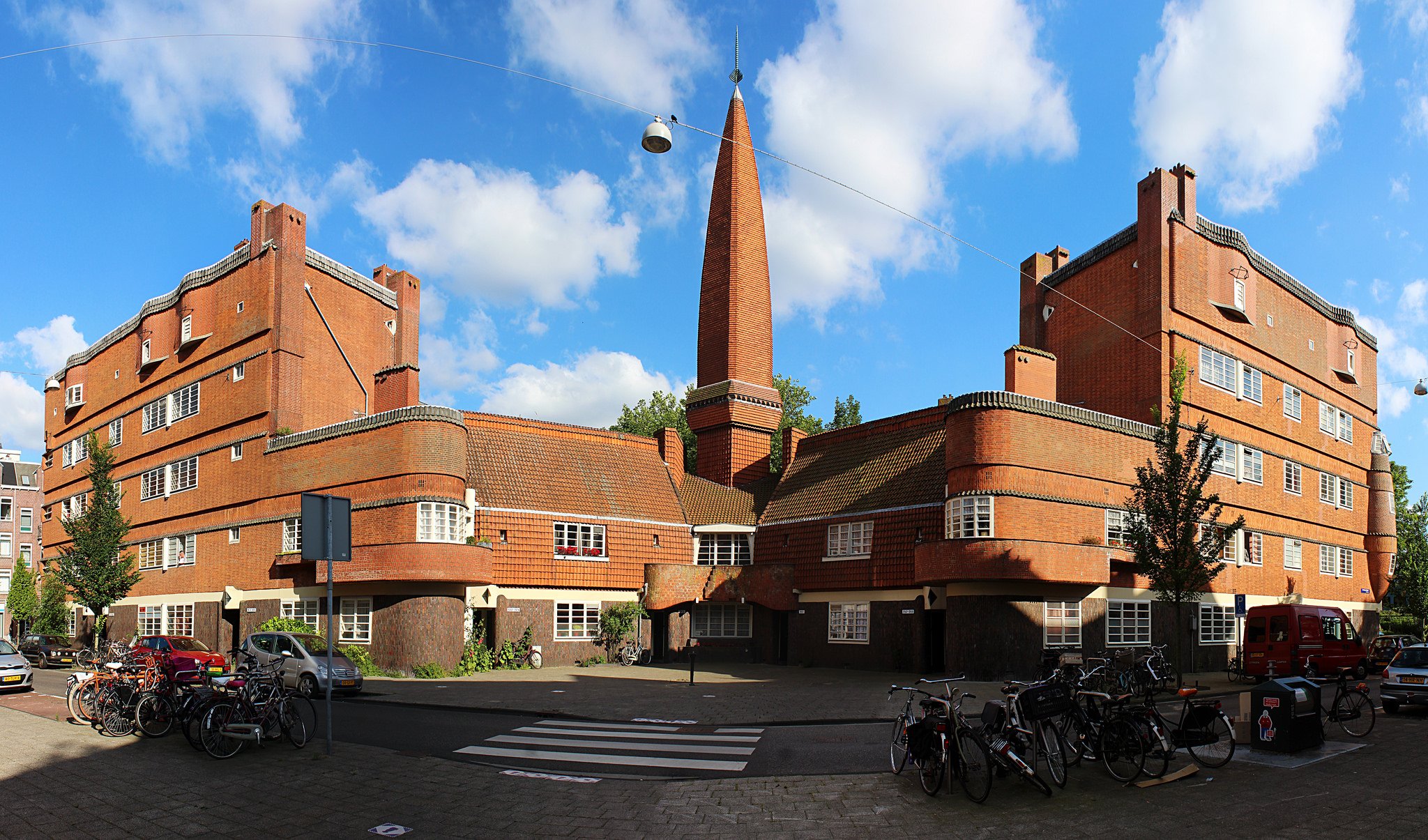
The real thing
For many visitors to the country the Netherlands equals Amsterdam. But there is so much more to the country. The next model is from Alkmaar which is only about 40km north of Amsterdam. Its famous cheese market is now just a weekly visitor spectacle recreating a sanitised version of how the market once operated. The market itself takes place on the square adjoining the building shown below which is the "Waag" or weighing house.
.jpg)
.jpg)
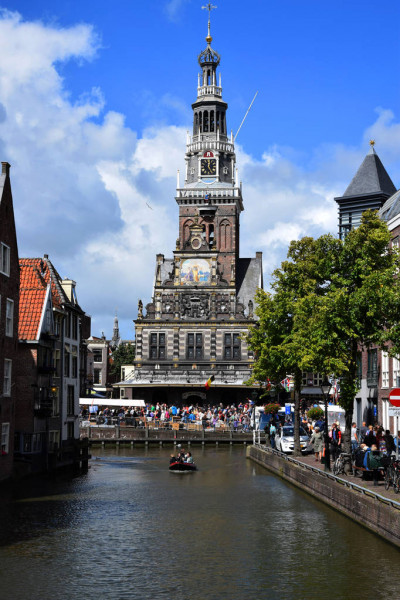
The model and the real thing
The building was originally a hospital chapel and the tower was added around 1600 after the change of use. Thanks Wikipeda for this background.
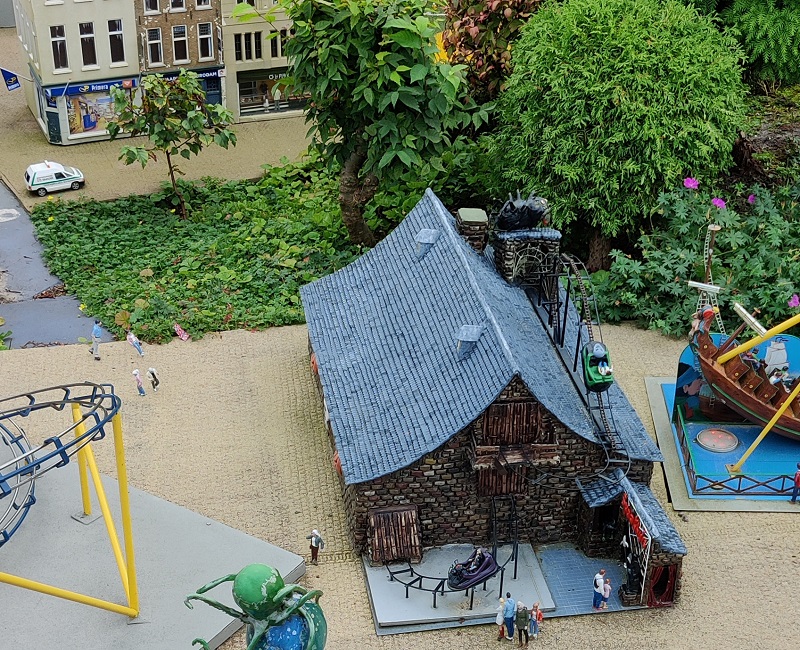
Something rather different. The house of Horrors at Madurodam funfair against a backdrop of 'Anytown' Dutch shops. Put 20 eurocents in the slot and the fairground attractions move for a couple of minutes.
The funfair picture illustrates several charecteristics of Madurodam. Unlike, for example, a model railway layout the site does not use model trees. Instead there is extensive real planting with most of the 'bushes' trimmed really hard to keep them loosely in scale with the buildings nearby. Whether they are actually bonsaid in pots with trimmed roots or just pruned really hard I'm not sure. The latter I suspect. Whichever, they are kept really well and contribute to the good feel of the place.
There are lots of little figures dotted around the buildings. Like this camera crew. Sometimes, as at the funfair, just a few to bring some life to the scene. Elswhere, as I illustrate later, big groups to create a whole scene. I haven't been able to find out much about the production of these. Although it's not top of the list of things to research in a miniature buildings website I would still be interested. The Madurodam website is not especially detailed or informative and the buildings and other models but is designed to encourage visitors to come and look.
One of their proud boasts is that the figures are changed with the seasons - the figures in tee shirts get taken away in the autumn and replaced with others dressed for winter. Not all I suspect but we did make a recent visit on a freezing cold winter's day and were impressed with the Christms themed variations! Not only was the park really quiet but the dusting of (real) frost added an extra charm.
.jpg)
.jpg)
The positioning of the shops behind the funfair illustrates clearly that this is a collection of individual buildings. It is not an attempt to illustrate a real scene. Interesting or different buildings from different towns and provinces stand cheek by jowl with one another.
The scene also illustrates one of the few criticisms I have about the display. Look how the house of horrors, and to a lesser extent the shops, are simply placed on the ground. There is no real attempt made to root them into their landscape. Given the attention to detail that is shown in the models themselves I guess this is pure practicality allowing them to be placed, removed and maintained.
Rather more conventional than the funfair is the next model. A large building surrounding a central courtyard now containing the Frans Hals Museum. It was formerly an Almshouse and later the town orphanage, in the centre of Haarlem - just west of Amsterdam. I think, and the pictures seem to bear it out, this is a great example of the modelmaker's art and craftsmanship.
.jpg)
.jpg)
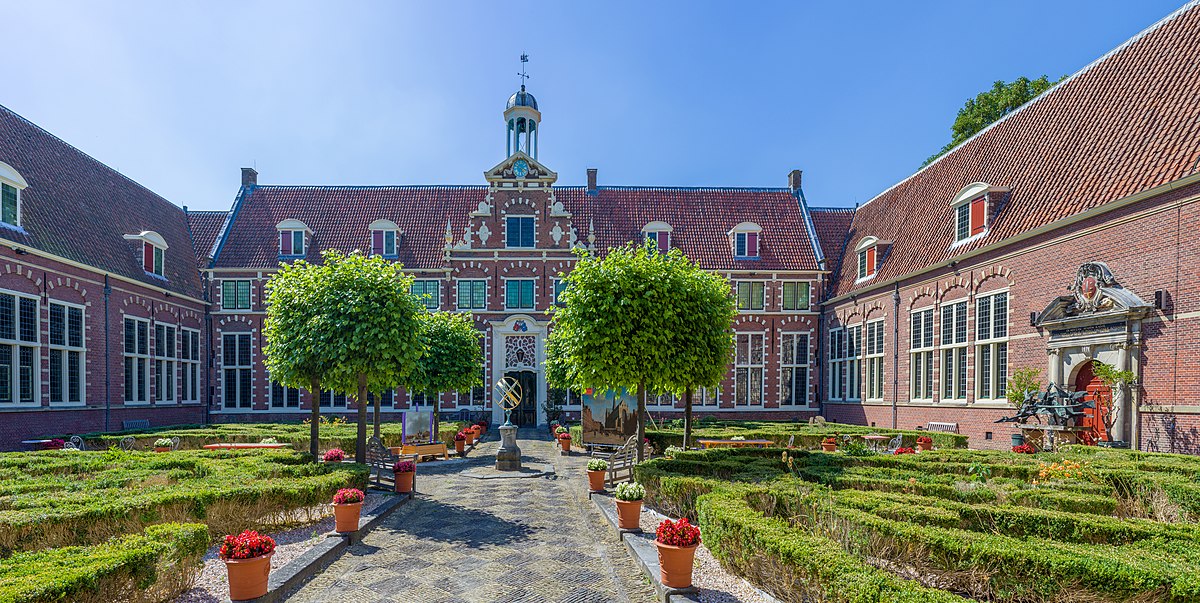
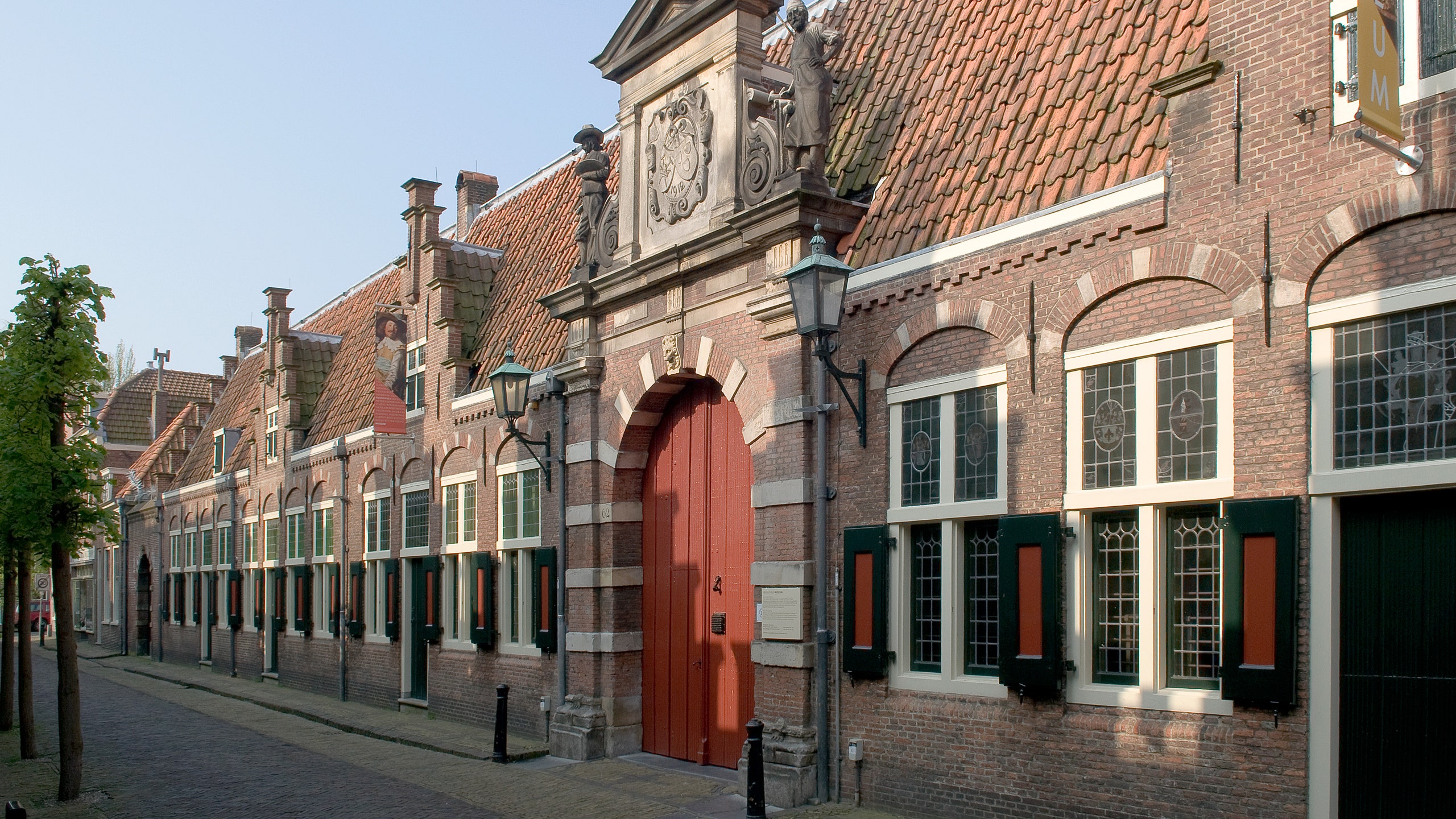
Two views of the model, and the real thing
Holland in miniature would not be complete of course without windmills. Their display is modelled on the Kinderdijk, a striking Unesco World Heritage collection of 19 mills. And demonstrating how effectivly Madurodam uses its miniature plants.
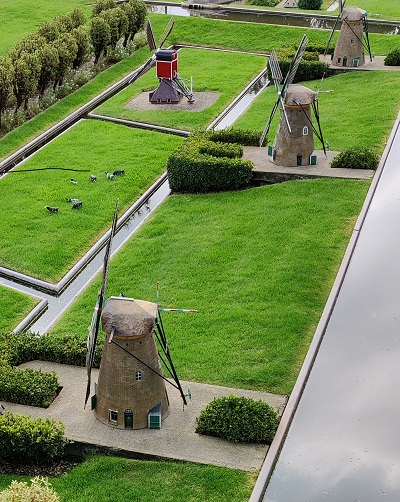
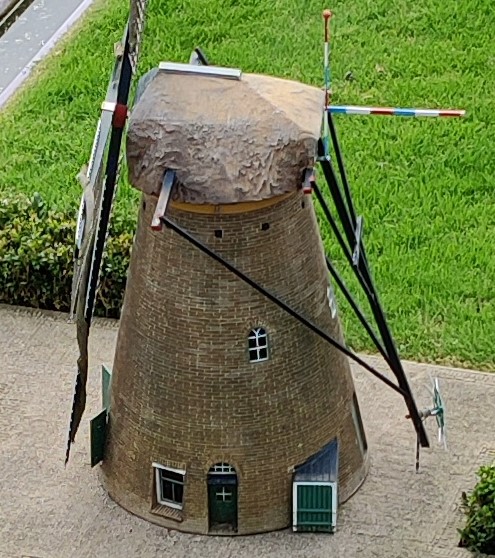
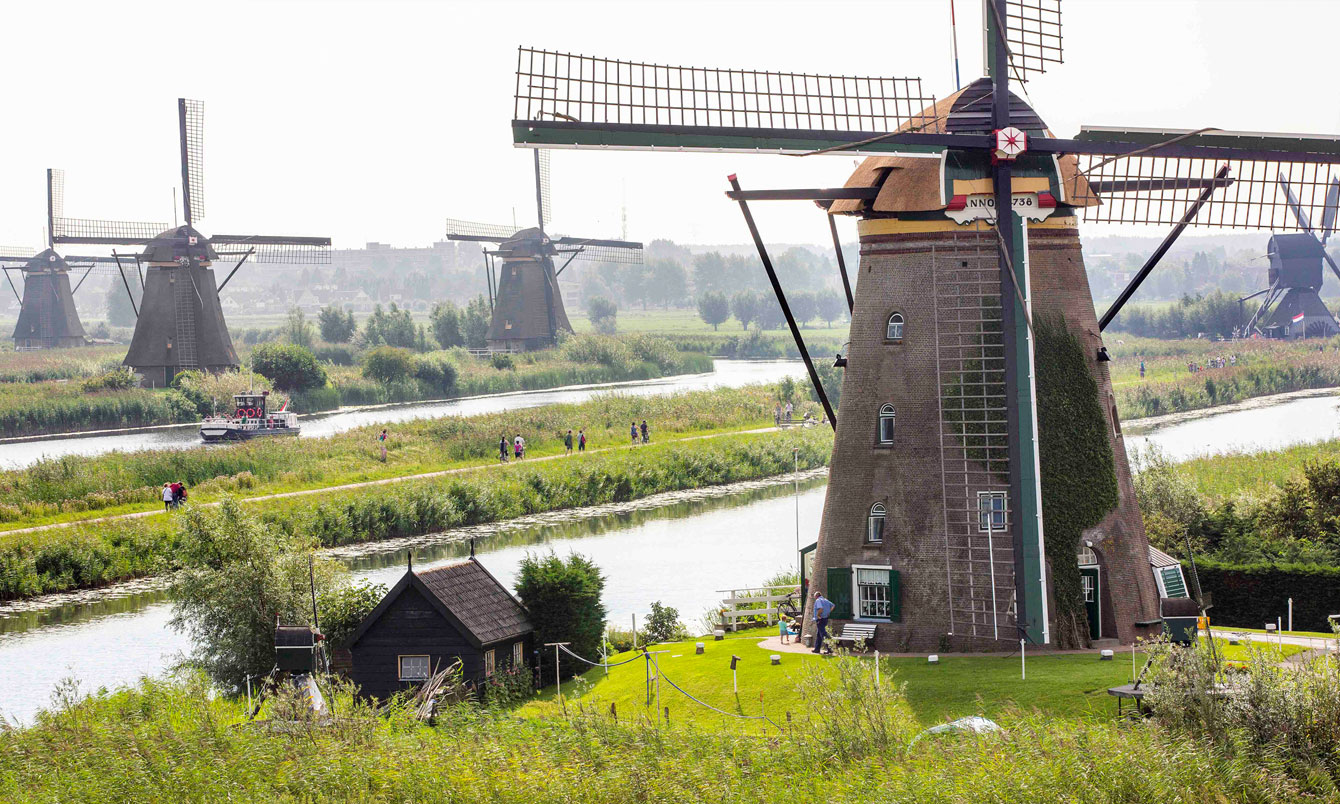
The next building is not especially notable, which is probably why it is tucked away in a corner of the miniature park, but is a lovely little example of a style of courtyard farm from the Limburg province in the south east of the country. Described as a "castle farm". Bringing back good memories for me of a family weekend near Maastricht in such a building. A section of the extensive Madurodam railway can be seen behind it.
.jpg)
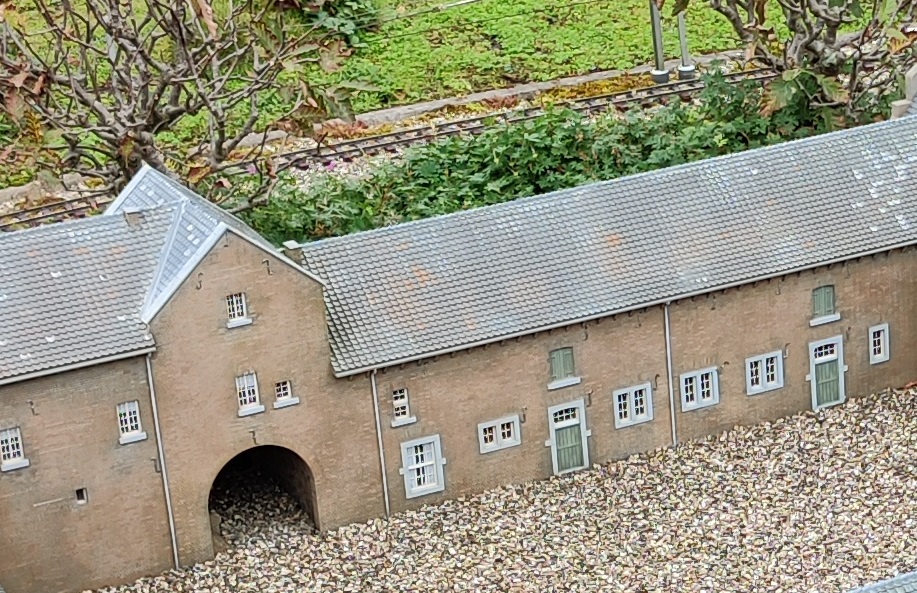
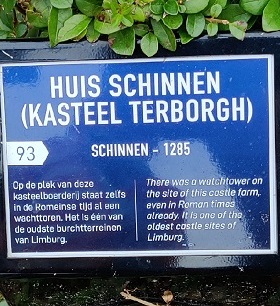
To finish, two of the grander signature pieces from the Madurodam collection. First the Domtoren from Utrecht. Originally built, between 1321 and 1382, as the tower to St. Martin's Cathedral it has been a freestanding tower since 1674 when the nave of the unfinished cathedral collapsed. Like the real thing, the tower model features a carillion which visitors can (and do with varied degrees of skill) play tunes on.
Crop.jpg)
.jpg)
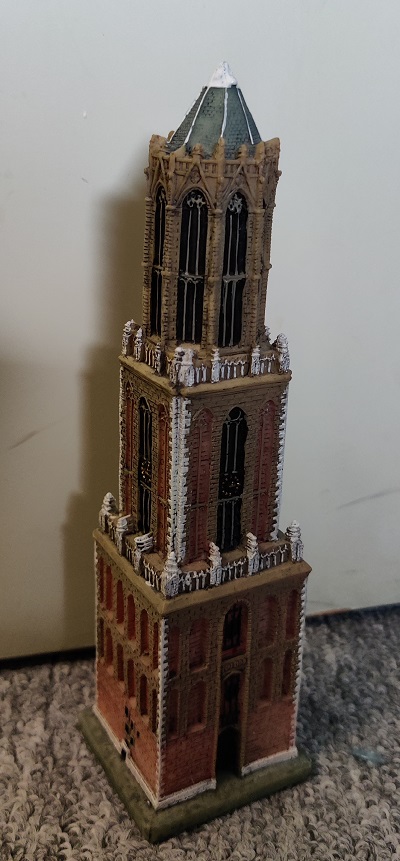 On the left the Madurodam model towering over other buildings. At 112.5 metres it is the tallest church tower in the Netherlands; at 1/25 scale that should be 4.5 metres. On the right a very much smaller cast resin model of what appears to be the same building. Just 15cm. I picked it up in a charity shop for just 50c.
On the left the Madurodam model towering over other buildings. At 112.5 metres it is the tallest church tower in the Netherlands; at 1/25 scale that should be 4.5 metres. On the right a very much smaller cast resin model of what appears to be the same building. Just 15cm. I picked it up in a charity shop for just 50c.
And finally. The courtyard of the Binnenhof, the parliament complex of the Netherlands in the Hague. Seen here in ceremonial event mode with lots of colourful figures.
.jpg)
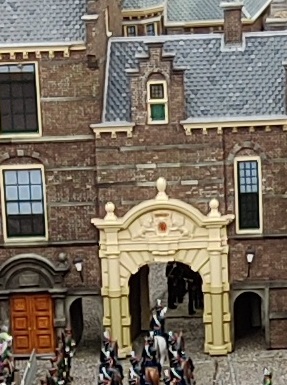
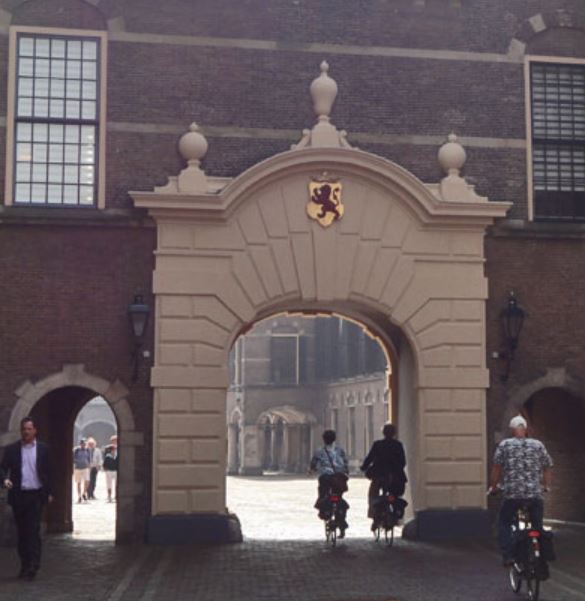 Maybe one of the most familiar archways in the country. More usually seen in a news bulletin with a politician being interviewed in front of it.
Maybe one of the most familiar archways in the country. More usually seen in a news bulletin with a politician being interviewed in front of it.
Which is all for now. I hope it will be possible to produce an extended article with more about the process by which these wonderful models are produced but that is still being discussed with Madurodam.
The most I have been able to find so far from web searches about the construction is this paragraph from a rather unusual site called slideplayer. It is apparently part of a presentation given over seven years by one Leo Pickford. Who may or may not be an IT specialist for an architectural practice. Why he produced this presentation I have no idea.
All the models, railway lines and decoration are manufactured by Madurodam itself. A lot of work goes into readying a model to be installed in the miniature town. For example, the model of Amsterdam Airport Schiphol took two years and four months to complete. Madurodam staff calculate the scaled down dimensions on the basis of architectural drawings. Moreover, detailed photographs are taken of the real building. The plastic (it used to be wood) is cut to the right shape and dimensions using a moulding cutter. Then the decorators and technicians finish the building. Because the models have to spend an average of 30 years outside they receive regular maintenance. To show the Dutch street image as realistic as possible, a great attention is given to the surroundings of the scale models. Plants are an important part of that. Madurodam primarily uses small-leafed trees and shrubs and frequent pruning is the only way we can keep these trees down to sixty centimetres when they normally grow to be fifteen metres high. Some trees have been here since the miniature city was opened.
As always, e-mail Miniature Buildings at
MiniatureBuildingSite@gmail.com if you have something to add. Comments, criticisms, errors you have spotted, extra thoughts, pictures, or even complete articles for inclusion in the Miniature Buildings site are all welcome. Or if you would like to be added to my mailing list to hear when a new article is published.
David, September 2021
updated December 2022